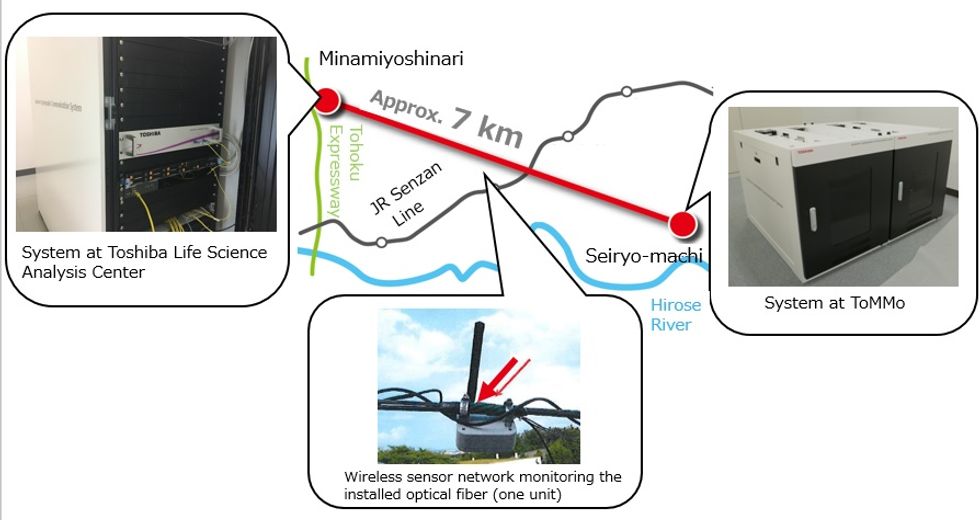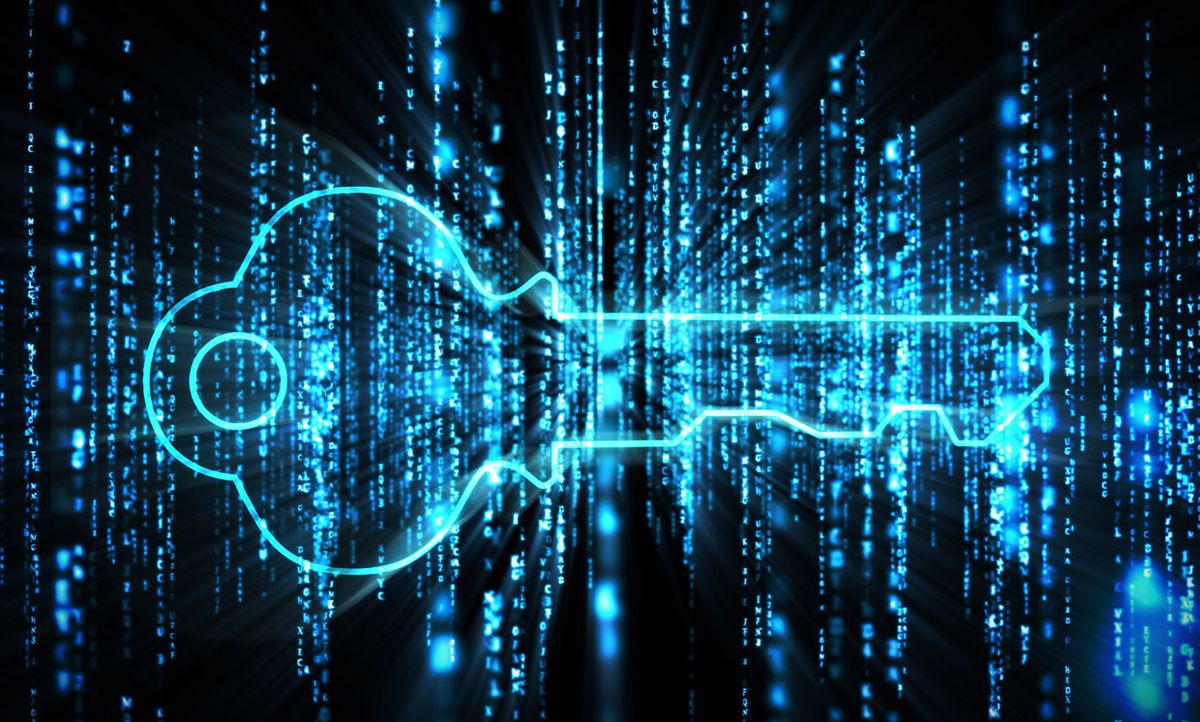Cryptographic protection of sensitive information is arguably facing its most severe challenge to date thanks to quantum computers. To counter this threat, researchers around the globe are investigating new ways to protect secret keys used to send and unlock encrypted data. One advanced method close to commercialization is quantum key distribution (QKD).
QKD employs a feature of quantum mechanics known as the uncertainty principle to ensure transmitted key data cannot be interfered with by an outside party without irreversibly altering the data. Any interference will leave its mark and be detected by the sender and receiver.
Toshiba is leading in high-speed QKD and has been holding field trials in Japan and the United Kingdom for several years. Recently, Toshiba and Tohoku Medical Megabank Organization (ToMMo) at Tohoku University announced that they have achieved, for the first time, an average key distribution speed greater than 10 megabits per second over a one-month period. This is roughly five times as fast as the previous fastest QKD speed of 1.9 Mbps established by Toshiba Research Europe in 2016.
In this scheme, a QKD transmitter modulates a photon’s phase to randomly represent a zero or one. Modulated photons are transmitted to the QKD receiver. Based on the received photons, secure keys are generated at both ends. The keys are then fed into a one-time pad algorithm to encrypt and decrypt all other transmitted data. This combination of one-time pad and QKD ensures the transmitted data is fundamentally safe and secure from any known method of attack.
The speed gains are a result of Toshiba and Toshiba Research Europe using high-speed photon detectors and control electronics to register the signals, as well as an improved method for processing the signals into secure key data. Error correction and privacy amplification, until now a bottleneck in the system, have also been enhanced, which has greatly improved the system’s postprocessing speed.

“The trial was conducted over 7-kilometer standard telecommunications single-mode fiber-optic lines connecting the two sites,” says Yoshimichi Tanizawa, senior research scientist at Toshiba’s Corporate Research & Development Center’s Network Systems Laboratory in Kawasaki, near Tokyo. “As the trial was conducted in a practical environment, it is an important step toward high-speed QKD commercialization.”
Toshiba says it has previously conducted successful field trials in the Tokyo area with single-span fiber-optic lines as long as 45 km, while lab tests in the U.K. have reached a distance of 240 km.
Moreover, Toshiba announced in May that it has devised and is testing a new protocol called Twin-Field QKD that will extend the distribution distance to over 500 km of optical fiber. Whereas single photons are sent from one end of the fiber to the other in conventional QKD, with the Twin-Field protocol, photons are sent from both ends to a central location for detection. This effectively doubles the transmission distance.
Commenting on the trials, Alan Woodward, a computer scientist at the University of Surrey, in England, says, “Toshiba’s announcement is notable not so much for the speed achieved, as the fact that it appears to have been done over an extended period over already-installed fibers.”
He added, however, that QKD’s widespread take-up will likely “depend not just on using existing installed fibers, but when you can multiplex QKD on fibers in some way with the data it’s there to protect.”
In the Tohoku trial, Toshiba and ToMMo used separate fiber lines for the content and the key.
In addition to running these tests, Toshiba and ToMMo operated a wireless sensor network to continuously monitor the installed fiber optic lines using multisensor devices incorporating accelerometers and temperature sensors.
The aim was to study how the fiber’s characteristics change with shifts in the weather and nearby vibrations, and how such changes impact the performance of the high-speed QKD. Such an understanding is crucial when the technology is applied to existing communication installations, especially where the fiber is aerial and exposed to the elements.
“The monitoring has confirmed the correlation between the stability of the high-speed QKD system and disturbances to the installed fiber,” says Tanizawa. “For example, we found wind-induced vibrations in the fiber affected stability. We are now working on improving the stability of the QKD system.”
One challenge that must still be overcome is standardizing features of the system. “For instance,” says Tanizawa, “we need to standardize the interface to deliver secure keys to any application, including those in health care, finance, and telecommunications.”
And while he acknowledges more field testing is required to fine-tune the system, he says, “We assume it will be ready for commercialization in 2020.”
Commenting on the growing competition to introduce QKD, Woodward said, “I’m not sure it’s about competing QKD systems but more about whether QKD will be seen as enough of a security advantage over postquantum crypto schemes to warrant the expense of the infrastructure.”
Toshiba is not the only company developing QKD. Telefonica, the Spanish multinational telecommunications provider, working with China’s Huawei and Spain’s Universidad Politecnica de Madrid (UPM), announced this May they had performed QKD field trials using commercial optical networks.
The Telefonica approach employs software-defined networking technology that enables the network to be centrally and intelligently controlled. Vicente Martin Ayuso, head of the Center for Computational Simulation at UPM, said at the announcement, “Now we have, for the first time, the capability to deploy quantum communications in an incremental way, avoiding large upfront costs and using the same infrastructure.”
And as for the QKD’s reputation for being uncrackable, Woodward added, “Nothing is unbreakable. Security is always about the weakest link. Many cryptographic schemes have been considered strong, but then some weakness in the implementation allows attackers to circumvent the security. In constantly talking about QKD as absolutely secure, a false sense of security is being established.”



